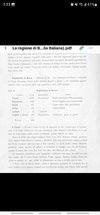Pulled a statement out of your gay habesh as and put it into quotations like we wouldn’t notice. There is absolutely no mention of Ethio-Semitic in the futuh"Ethio-Semitic speakers formed the dominant section of the Adal population."
You are using an out of date browser. It may not display this or other websites correctly.
You should upgrade or use an alternative browser.
You should upgrade or use an alternative browser.
Is anyone else angry Somali history before colonization is not well known?
- Thread starter DangerBadan
- Start date
Ethio Semetic is a term orthodox amhara supremacists use to claim muslim harari achievments after they genocided harar.Pulled a statement out of your gay habesh as and put it into quotations like we wouldn’t notice. There is absolutely no mention of Ethio-Semitic in the futuh
Somali_patriotic
Everything unuka leh
Greatest Islamic sultanates in the horn + best scholars in the horn + Greatest warriors in the horn
Horn of africa without somalis is like a bariis without moos
Unuka leh dhamantooda kuli taarikh, Sharaf, dhul iyo geel ba

Horn of africa without somalis is like a bariis without moos
Unuka leh dhamantooda kuli taarikh, Sharaf, dhul iyo geel ba
You said with full firmness that "We had a strategic location in the Indian Ocean for much of our history." Why did the benadiri place strict restrictions on nomadic movements in the coastal settlements? How can the indigenous inhabitants be regulated and restricted in their own city by the so-called Arab foreigners? Do you realize how intellectually dishonest and foolish you sound? No Somali was allowed to reside in Benadiri towns but in settlements a quarter of a mile away.There were not nearly as many cities in the Highlands than in the Somali peninsula. I thought people knew this already but niggas gonna nigga.
Ethiopia was a feudal state, everyone lived on farms ruled by lords who answered to the emperor. The reason Ethiopia's borders changed so much is because whenever the emperor declared war his feudal lords would just say they aren't part of the empire anymore and after the war they would rejoin. There were no need for multiple and larger cities.
On the Somali peninsula farming was done but not everywhere due to it being arid in many parts. What we had was strategic location to the indian ocean for much of history was the richest trade in the world due to India. The way the peninsula's economy worked was that you would have Geelgires going to the city and selling their livestock and other goods to the merchants in the city who would then sell them to other nations/regions along the ocean such as Arabia which still happens today. But we also had foriengiers like Iranian and Indian merchants come to the city and intermarried with local Somali which is how we got people like @HabarSteven12
The trade to zelia port city which is where lots of goods left and came into abyssinnia was also somali.
In the south with cities like Mogadishu the trade was focused along this river system. View attachment 289297
You can clearly see the major somali cities and others such as harar are based here. This is where trade and commerce between Geelgires and City dweller Somalis took place and the economy was based.
Sure abyssinnia was based on agriculture and fuedal lords which is why they had a single state. But they also weren't nearly as urbanised as the Somali peninsula. You put too much emphasis on farming as if Feudalism was the only way to get shit done.
Attachments
This seems to be clear from al-"Umari's description of Ifat, whose language he tells us was 'Abyssinian and Arabic'.' Following this, al-'Umari not only gives a list of words some of which are still identifiable, but he also provides us with the earliest Arabic description of the Ethiopian alphabet, Again, the names of the princes in the Arabic documents published by Entico Cerulli regarding the early sultanate of Shoa and the Walasma dynasty of both Ifat and Adal, indicate that some sort of Ethio-Semitic was spoken by the early Muslims in these areas. The implication of all this is that early Islam, in the Shoan region at least, had its first roots among the Ethio-Semitic speakers of the area, who later formed and ran the sultanate of Shoa and consequently the Walasma kingdoms of Ifat and Adal. Perhaps the picture was also the same in the Muslim communities immediately to the south of Ifat, particularly in Dawaro, Sharka and Hadya, where Ethio-Semitic speakers similarly may have taken a leading role.Pulled a statement out of your gay habesh as and put it into quotations like we wouldn’t notice. There is absolutely no mention of Ethio-Semitic in the futuh
Thus, it is apparent that, in the major Muslim states of the region, Ethio-Semitic speakers formed the dominant section of the population. Arab Faqihs literally states, "Ethio-Semitic speakers formed the dominant section of the Adal population." Al-'Umari, Masālik, 7-13, 21. I understand you don't have the intellectual capacity to comprehend this complex academic literature. No mention of any Somali ruling Zeila or Adal. There are literal documents by Arab geographers showing the names and inhabitants of Adal, Zeila and Ifat.
tyrannicalmanager
pseudo-intellectual
You said with full firmness that "We had a strategic location in the Indian Ocean for much of our history." Why did the benadiri place strict restrictions on nomadic movements in the coastal settlements? How can the indigenous inhabitants be regulated and restricted in their own city by the so-called Arab foreigners? Do you realize how intellectually dishonest and foolish you sound? No Somali was allowed to reside in Benadiri towns but in settlements a quarter of a mile away.
Your own source identify Benaadiri as Urban Somalis.
 Next this man will claim Siyaad barre was Harari and somalis were mere Nomads used as canonfodder to liberate Harar.
Next this man will claim Siyaad barre was Harari and somalis were mere Nomads used as canonfodder to liberate Harar.
Last edited:
You ignorance . Umari's did not visit the region and he was believed that the entire Horn of Africa was HabashThis seems to be clear from al-"Umari's description of Ifat, whose language he tells us was 'Abyssinian and Arabic'.' Following this, al-'Umari not only gives a list of words some of which are still identifiable, but he also provides us with the earliest Arabic description of the Ethiopian alphabet, Again, the names of the princes in the Arabic documents published by Entico Cerulli regarding the early sultanate of Shoa and the Walasma dynasty of both Ifat and Adal, indicate that some sort of Ethio-Semitic was spoken by the early Muslims in these areas. The implication of all this is that early Islam, in the Shoan region at least, had its first roots among the Ethio-Semitic speakers of the area, who later formed and ran the sultanate of Shoa and consequently the Walasma kingdoms of Ifat and Adal. Perhaps the picture was also the same in the Muslim communities immediately to the south of Ifat, particularly in Dawaro, Sharka and Hadya, where Ethio-Semitic speakers similarly may have taken a leading role.
Thus, it is apparent that, in the major Muslim states of the region, Ethio-Semitic speakers formed the dominant section of the population. Arab Faqihs literally states, "Ethio-Semitic speakers formed the dominant section of the Adal population." Al-'Umari, Masālik, 7-13, 21. I understand you don't have the intellectual capacity to comprehend this complex academic literature. No mention of any Somali ruling Zeila or Adal. There are literal documents by Arab geographers showing the names and inhabitants of Adal, Zeila and Ifat.
tyrannicalmanager
pseudo-intellectual
You know that Arabs use Abyssinian as a catch-all term for east Africa? also according to your logic the Marexan clan leader wasn't Somali because he has an Ethio-Semitic name.This seems to be clear from al-"Umari's description of Ifat, whose language he tells us was 'Abyssinian and Arabic'.' Following this, al-'Umari not only gives a list of words some of which are still identifiable, but he also provides us with the earliest Arabic description of the Ethiopian alphabet, Again, the names of the princes in the Arabic documents published by Entico Cerulli regarding the early sultanate of Shoa and the Walasma dynasty of both Ifat and Adal, indicate that some sort of Ethio-Semitic was spoken by the early Muslims in these areas. The implication of all this is that early Islam, in the Shoan region at least, had its first roots among the Ethio-Semitic speakers of the area, who later formed and ran the sultanate of Shoa and consequently the Walasma kingdoms of Ifat and Adal. Perhaps the picture was also the same in the Muslim communities immediately to the south of Ifat, particularly in Dawaro, Sharka and Hadya, where Ethio-Semitic speakers similarly may have taken a leading role.
Thus, it is apparent that, in the major Muslim states of the region, Ethio-Semitic speakers formed the dominant section of the population. Arab Faqihs literally states, "Ethio-Semitic speakers formed the dominant section of the Adal population." Al-'Umari, Masālik, 7-13, 21. I understand you don't have the intellectual capacity to comprehend this complex academic literature. No mention of any Somali ruling Zeila or Adal. There are literal documents by Arab geographers showing the names and inhabitants of Adal, Zeila and Ifat.
Before arabs learned to distinguish the horn between the Christian habash and Muslim Berber they just called everyone there Habasha since we all looked the same. You can see this in many of their early texts about the hornYou ignorance . Umari's did not visit the region and he was believed that the entire Horn of Africa was Habash
View attachment 289394
this is where most of these cadcads get their sources from gahhhdamn
The Banaadirs (also spelled "Benadir") are people with their roots in ancient Arabia, Persia and South and Central Asia. Their name is derived from a Persian word "bandar" which means "harbor" or port, reflecting their origins as sea-faring traders who crossed the Indian Ocean to the easternmost part of Africa and established centers of commerce which linked that continent with Asia. The first Banaadiri communities were established in what is today southern Somalia about one thousand year ago. Their reputation as the settlements of a prosperous and peace loving people was set down in written accounts by foreign travelers to Africa dating back to the 13th century "The Banaadir Coast" as proper name for coastal northeast Africa was used well into 20th century, and as informal designation for southern Somalia remains in use today. Being the first to live in this region as nomalid
kkkkkkkkkk African interior
Banaadir came to the coast in the 13th century but somalis didn't arrive till centuries laterThis cadcad person has been reading too much cadcad propaganda.
this is where most of these cadcads get their sources from gahhhdamn
The Banaadirs (also spelled "Benadir") are people with their roots in ancient Arabia, Persia and South and Central Asia. Their name is derived from a Persian word "bandar" which means "harbor" or port, reflecting their origins as sea-faring traders who crossed the Indian Ocean to the easternmost part of Africa and established centers of commerce which linked that continent with Asia. The first Banaadiri communities were established in what is today southern Somalia about one thousand year ago. Their reputation as the settlements of a prosperous and peace loving people was set down in written accounts by foreign travelers to Africa dating back to the 13th century "The Banaadir Coast" as proper name for coastal northeast Africa was used well into 20th century, and as informal designation for southern Somalia remains in use today. Being the first to live in this region as nomalid "Samale" (Somali) people from the African interior did not press south and east to the Indian Ocean until centuries later
So we came to the coastal cities like Mogadishu around 1400s or later according to these idiots.
Not to mention their whole people is literally a mixture of Somali and whatever foreign merchant from the indian ocean came.
And what is it with these .5s and their use of Samaale?? Can't they just call us Somali.
Somali_patriotic
Everything unuka leh
Al umari obviously meant a local language by "لغة الحبشة" as a language called Abyssinian don't exist while a region called Abyssinian *which according to al umari somali inhabited lands were part of it* existed so he went calling the local language by it's region nameYou ignorance . Umari's did not visit the region and he was believed that the entire Horn of Africa was Habash
View attachment 289394
Just like how ibn battuta named the language spoken in mogadishu *which was obviously somali* maqdishi the name of the city.
Your refutation actually supports my original point lol. The walls were brought down by the Italians, which allowed the influx of Somali nomads to enter the city. Before the walls were brought down, the Italian colonial regime collected the population of Mogadishu. They researched and studied the clan structure. They managed to record people based on their clans and identity. The documents show Benadiri was the majority.Your own sources identify Benaadiri as Urban Somalis.next this man will claim Siyaad barre was Harari and somalis were mere Nomads in used as canonfodder to liberate harar.
View attachment 289392
Scholar Scott doesn't allude to benadiri being ethnic Somalis. Stop misconstruing his statements. When he said the "Urban Somalis", he meant the urban population of modern day Italian Somalia. No mention of any urban Somali qabil inhabiting the benadir coast before the Europeans collated the population of Mogadishu. I don't Carr about Said barre. You marehans can claim him
Attachments
That's where most of you Somali nationalist Incels get your source. You guys think Wikipedia is a legitimate academic sourceThis cadcad person has been reading too much cadcad propaganda.
this is where most of these cadcads get their sources from gahhhdamn
The Banaadirs (also spelled "Benadir") are people with their roots in ancient Arabia, Persia and South and Central Asia. Their name is derived from a Persian word "bandar" which means "harbor" or port, reflecting their origins as sea-faring traders who crossed the Indian Ocean to the easternmost part of Africa and established centers of commerce which linked that continent with Asia. The first Banaadiri communities were established in what is today southern Somalia about one thousand year ago. Their reputation as the settlements of a prosperous and peace loving people was set down in written accounts by foreign travelers to Africa dating back to the 13th century "The Banaadir Coast" as proper name for coastal northeast Africa was used well into 20th century, and as informal designation for southern Somalia remains in use today. Being the first to live in this region as nomalid"Samale" (Somali) people from the African interior did not press south and east to the Indian Ocean until centuries later
kkkkkkkkkk African interior
Your source is bullshit. I haven't seen a somali nationalist use those sources.That's where most of you Somali nationalist Incels get your source. You guys think Wikipedia is a legitimate academic source.
And why do you overuse the word incel so much, nigga we aren't incels. Most somali men are married in their 20s.
Liar Liar pants on fire. Umari did visit the region. Don't deny itYou ignorance . Umari's did not visit the region and he was believed that the entire Horn of Africa was Habash
View attachment 289394
Liar Liar pants on fire. Umari did visit the region. Don't deny it. Don't lie about the great Arabic Scholar.

Somali_patriotic
Everything unuka leh
Source?Liar Liar pants on fire. Umari did visit the region. Don't deny it. Don't lie about the great Arabic Scholar.
Al umari didn't visit the region even @Idrus came with evidence
Why didn't you read it first
Google translation:
In the section on the country of Abyssinia, Al-Omari referred to its location at the beginning, saying that the Indian Sea (the Indian Ocean) and Yemen bordered it to the north-east, and to the west the country of takrour (168). However, he did not mention what surrounds Abyssinia from the north or the south, while he refers to the existence of a river called Sihon that flows in Abyssinia and supplies the Nile with water, and its water is sweet and not salty (164). It is clear to us from the foregoing that Al-Omari was unable to give the exact names of the places because HE DID NOT VISIT THE REGION. Also, his naming of Chapter Eight of the book was contrary to the truth and inaccurate by comparison with all his contemporaries or predecessors among the Muslim historians and geographers who asserted that the Muslim kingdoms in Abyssinia include more than that."
You are the only one who says this. All the Arabic books who quote from his book say that he has never visited horn,Liar Liar pants on fire. Umari did visit the region. Don't deny it. Don't lie about the great Arabic Scholar.
This seems to be clear from al-"Umari's description of Ifat, whose language he tells us was 'Abyssinian and Arabic'.' Following this, al-'Umari not only gives a list of words some of which are still identifiable, but he also provides us with the earliest Arabic description of the Ethiopian alphabet, Again, the names of the princes in the Arabic documents published by Entico Cerulli regarding the early sultanate of Shoa and the Walasma dynasty of both Ifat and Adal, indicate that some sort of Ethio-Semitic was spoken by the early Muslims in these areas. The implication of all this is that early Islam, in the Shoan region at least, had its first roots among the Ethio-Semitic speakers of the area, who later formed and ran the sultanate of Shoa and consequently the Walasma kingdoms of Ifat and Adal. Perhaps the picture was also the same in the Muslim communities immediately to the south of Ifat, particularly in Dawaro, Sharka and Hadya, where Ethio-Semitic speakers similarly may have taken a leading role.
I read the Arabic book and it’s very much different but even if we follow your made up history, this really proves nothing Absyinan is not a language nor is Barbari. The same was said about the Agaw who speak cushitic. Arabs had no understanding of modern language classifications.Thus, it is apparent that, in the major Muslim states of the region, Ethio-Semitic speakers formed the dominant section of the population. Arab Faqihs literally states, "Ethio-Semitic speakers formed the dominant section of the Adal population." Al-'Umari, Masālik, 7-13, 21. I understand you don't have the intellectual capacity to comprehend this complex academic literature. No mention of any Somali ruling Zeila or Adal. There are literal documents by Arab geographers showing the names and inhabitants of Adal, Zeila and Ifat.




